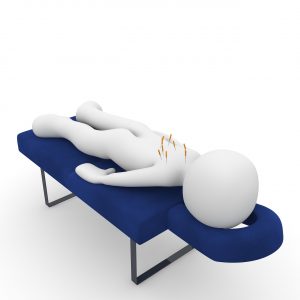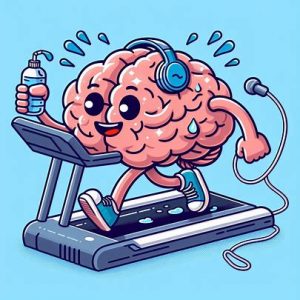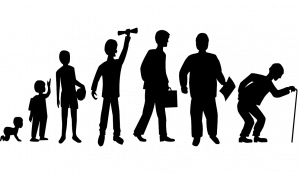With the ever increasing sedentary nature of our world a common concern of parents is ensuring their children get enough physical activity. While activities like running, swimming, and playing team sports are widely accepted as healthy, there’s another aspect of fitness that deserves attention: weight training. In this blog, we’ll explore why children should lift weights and how it can positively impact their overall health and development.
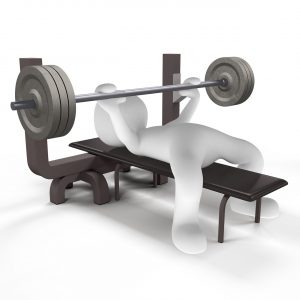
1. Dispelling Myths
Before we dive into the benefits, let’s address some common misconceptions about strength training for kids:
- Myth 1: Stunting Growth
- Many parents worry that weightlifting will stunt their child’s growth. However, research shows that properly supervised strength training does not hinder growth. In fact, it can promote healthy bone development.
- Myth 2: Risk of Injury
- Safety is a valid concern, but when done correctly, strength training is safe for children. Proper form, appropriate weights, and supervision are crucial. It is interesting to note that injury rates in settings with good supervision and proper technique are much lower than those seen during most other sports or even in the school playground.
2. The Benefits of Weight Training
a. Muscle Strength and Endurance
- Strength training helps kids build muscle strength and endurance. It’s not only about bulking up; but also about functional strength that supports daily activities.
b. Hormonal Response
1. Human growth hormone (HGH) is stimulated by strength training. HGH aids in building muscle, burning fat, and promoting bone growth. So rather than stunting growth, weight training actually assists it!
2. Testosterone is stimulated by strength training, however this varies by biological sex. Boys see significant increases in Testosterone after weight training, whereas girls see only minor changes. Testosterone is important for developing muscle size and strength
3. Strength training also increases insulin sensitivity, which helps control blood sugar and reduces the risk of type 2 diabetes.
c. Metabolic Health
- Regular strength training increases lean body mass, which positively impacts metabolic rate. This can help prevent obesity and related health issues.
d. Strong Bones
- Weight training strengthens bones and reduces the risk of fractures during sport and osteoporosis later in life.
e. Injury Prevention
- Strong muscles and bones are less prone to injuries during sports and play.
f. Sports Performance
- Strength training enhances athletic performance by improving power, agility, and coordination.
g. Establishing a Fitness Habit
- Starting early builds a lifelong habit of physical activity and fitness.
h. Can Promote Psychological Well-being and Improve Self-esteem
So what have we learnt…
Weight training can be extremely beneficial for children, laying the foundation for lifelong health and fitness. There are many health and performance benefits that can be attained and lifting weights DOES NOT STUNT GROWTH! Children should be encouraged to partake in resistance exercise but emphasis should be placed on gradual introduction, proper learning of technique, and above all safety.
The following articles take a detailed look at the research in this area
Weightlifting for Children and Adolescents: A Narrative Review (2022)
Resistance Training for Children and Adolescents (2020)
Strength Training by Children and Adolescents (2008)
As we age, our bodies undergo numerous changes, and one of the less discussed yet critical issues is sarcopenia. Sarcopenia is characterized by the gradual decline in skeletal muscle mass, strength, and function as we grow older. This silent but impactful condition not only affects our physical health but can also have broader implications for overall well-being.

Running a marathon is a challenging and rewarding goal, but it also comes with the risk of getting injured. Whether you are a beginner or an experienced runner, you need to take care of your body and follow some best practices to avoid common running injuries. In this post, I will share some top tips for marathon runners to prevent injuries and enjoy a safe and successful race.

1. Choose an appropriate marathon training programme
Spend some time choosing a training programme that is appropriate for you. If you are a beginner, or new to marathons, don’t pick an advanced programme. Likewise, if you have a manual job your body may not be able to cope with the same training load as a student. Things to consider are your age, running experience, occupation, and family commitments (having a young child means less sleep and slower recovery!). Choosing a programme that is too advanced and doesn’t suit your individual needs will inevitably lead to overuse and injury.
2. Increase your mileage gradually
One of the most common causes of running injuries is increasing your mileage too quickly and too soon. Your body needs time to adapt to the stress of running longer and harder, and if you overload it, you can end up with overuse injuries such as shin splints, runner’s knee, or Achilles tendinopathy. A general rule of thumb is to increase your weekly mileage by no more than 10% each week.
3. Incorporate strength training
Strength training is not only beneficial for improving your running performance, but also for preventing injuries. Strength training can improve your muscle and tissue tolerance, endurance, and efficiency, and reduce the energy required for each running stride.
4. Listen to your body
Your body is your best guide when it comes to avoiding injuries. You need to pay attention to how you feel during and after your runs, and adjust your training accordingly. If you feel any pain, discomfort, or niggles, do not ignore them or try to run through them. Instead, take a break, ice the affected area, and seek professional advice if needed. Running through pain can worsen your injury and delay your recovery. Similarly, if you feel fatigued, ill, or stressed, take it easy and rest. Overtraining can lead to burnout, lowered immunity, and loss of form.

6. Drink plenty of water
Hydration is crucial for runners, as it affects your body temperature, blood volume, heart rate, and muscle function. Dehydration can impair your performance, increase your perceived exertion, and cause cramps, headaches, nausea, and dizziness. To prevent dehydration, you should drink plenty of water before, during, and after your runs, and replenish any electrolytes that you lose through sweat. The amount of water you need depends on your body weight, sweat rate, and environmental conditions, but a good guideline is to drink about 500ml of water 2 hours before you run, 150-200ml every 15-20 minutes you run, and 500 – 1000ml after your run.
7. Get enough sleep
The average person requires 7-9 hours of sleep a night, however, this varies due to genetic and lifestyle factors. If you’re training for a marathon you may find that you’re tired more often and require more sleep. Since sleep improves all areas of brain and cellular health it follows that it will improve your athletic performance as well. Professional athletes are well known for their sleep schedules. Runner’s World even has an article entitled “Sleep Your Way to a PR.”
The third stage of a typical sleep cycle is when the body heals itself. Human growth hormone (HGH) is released at this time from the pituitary gland and it plays a key role in building and repairing muscle tissue and bones, as well as helping the body use fat as fuel. Without the right amount of HGH in the blood, recovery from workouts is hindered. When a person is chronically sleep deprived their level of HGH decreases and another hormone, cortisol (also called the stress hormone) increases. High levels of cortisol can be dangerous because it may prohibit the body from recovering fully and it can also interfere with the repair and growth of soft tissue.
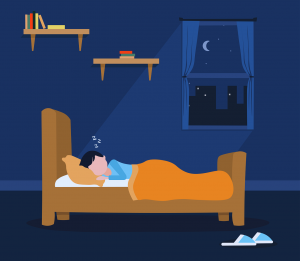
8. Diet
You should consume both carbohydrates and protein before and after your exercise, either from food or supplements. These nutrients provide energy and help repair and build muscle tissue.
Calcium and vitamin D are essential for bone health and density, which may help prevent stress fractures. They also support muscle and nerve function, and help regulate inflammation. During the autumn and winter, you need to get vitamin D from your diet because the sun is not strong enough for the body to make it. But since it’s difficult for people to get enough vitamin D from food alone, everyone should consider taking a daily supplement.
Running a marathon is an amazing achievement, but it also requires a lot of preparation and care. By following these tips, you can reduce your risk of getting injured and enjoy a safe and successful race. Remember to always listen to your body, train smart, and have fun!
Patients regularly ask me whether Acupuncture or Dry Needling would help their condition. I’ve always felt there isn’t sufficient evidence to support these treatments and a recent post by Adam Meakins (The Sports Physio) on social media further strengthened my opinions. The following summarises his post –
- Acupuncture is not an ancient treatment
Chairman Mao revived Acupuncture in 1966 to cover up a lack of medical services at the time. It hadn’t been used in China for 1000’s of years. Colquhoun & Novella (2013) Acupuncture is a theatrical placebo. Anesthesia and Analgesia.
2. Acupuncture wasn’t a treatment for pain
Chinese warriors originally used acupuncture as a blood letting treatment to help infected wounds heal better. Colquhoun & Novella (2013) Acupuncture is a theatrical placebo. Anesthesia and Analgesia.
3. Acupuncture is not specific
It doesn’t matter where you stick the needles, you get the same effect. Moffet et al (2009) Sham acupuncture may be as efficacious as true acupuncture: a systematic review of clinical trials. Journal of Alternative Complementary Medicine.
4. Acupuncture doesn’t even need to puncture the skin
Toothpicks pressed on the skin work just as well as piercing the skin with a needle. Cherkin et al (2009) Acupuncture, simulated acupuncture, and usual care for chronic low back pain. Archives of Internal Medicine.
5. Acupuncture doesn’t reduce pain much at all
Paley & Johnson (2020) Acupuncture for the relief of Chronic Pain: a synthesis of systematic reviews. Medicina
In my opinion I don’t feel there is the evidence to back up the use acupuncture or dry needling with musculoskeletal conditions and any results seen from these treatments are most likely due to the placebo effect.
